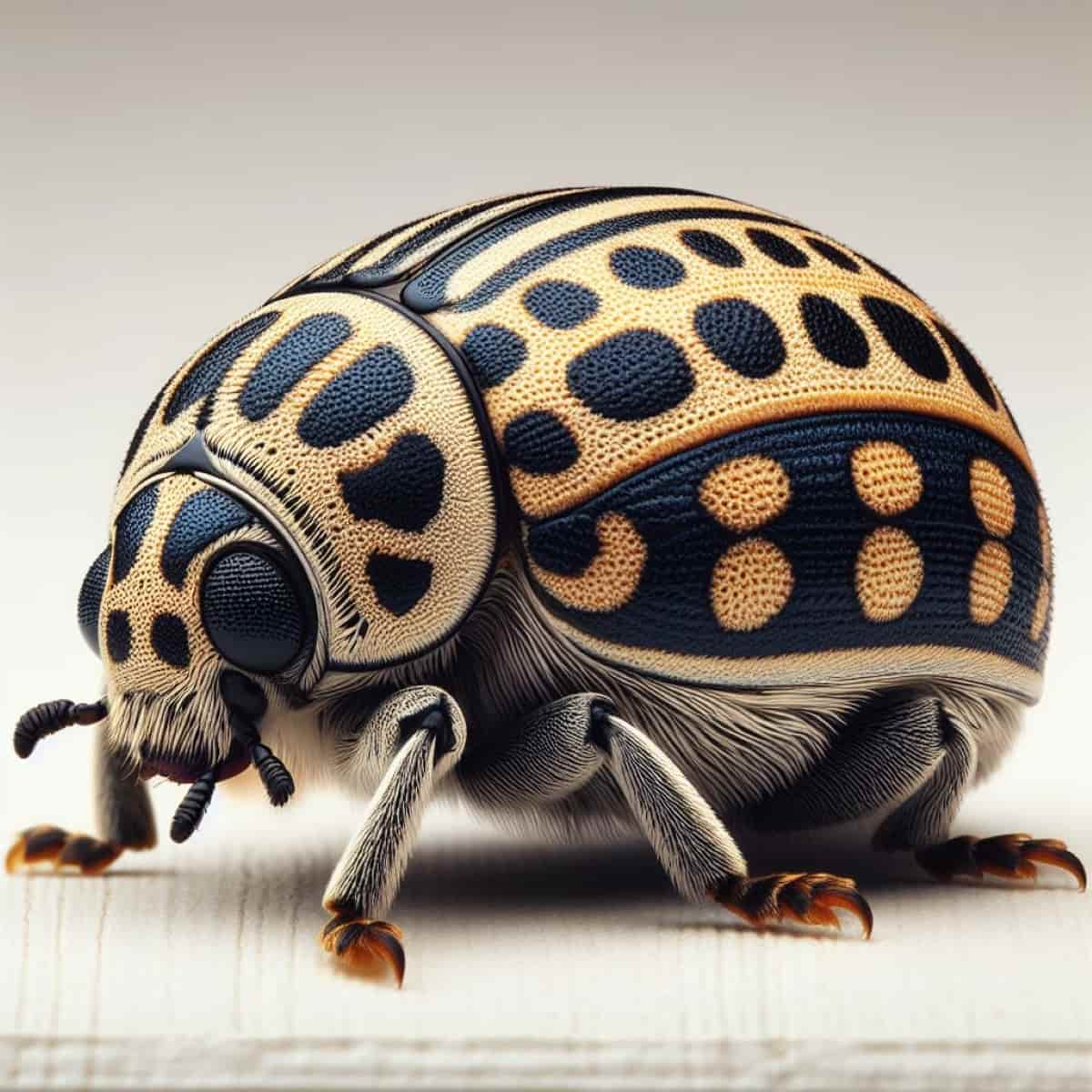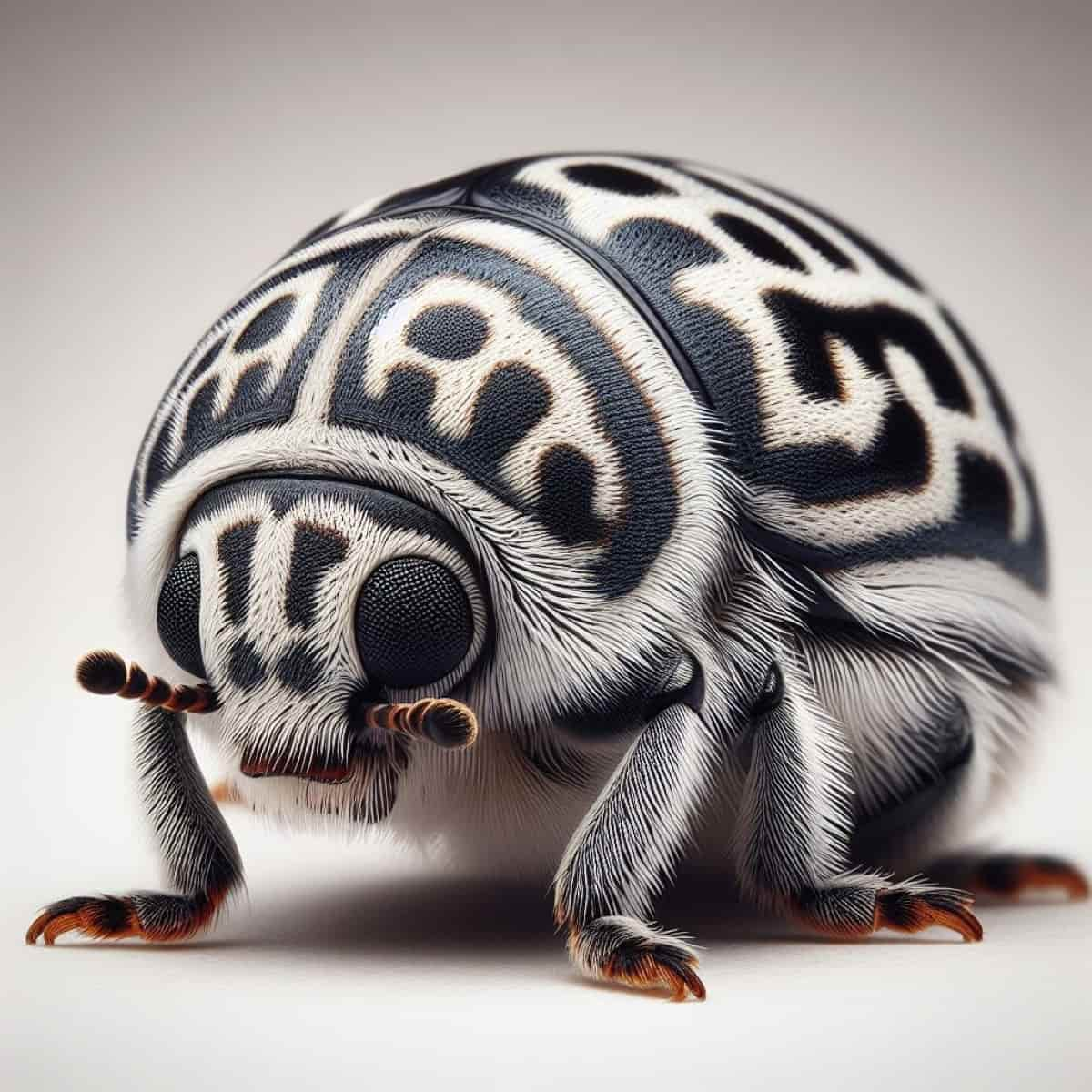Carpet beetles may seem harmless, but they can wreak havoc on home if left unchecked. That’s why it is crucial to understand the importance of getting rid of these pests as soon as possible. Prevent carpet beetles from your home by sealing any gaps in windows, doors, walls, and floors. This will reduce the chances of infestation.

How to Get Rid of Carpet Beetles
Understand the Life Cycle of Carpet Beetles
Carpet beetles go through four stages: egg, larva, pupa, and adult. The first stage begins with the female beetle laying eggs on surfaces such as carpets, upholstery, or clothing. These eggs are small and usually white or cream-colored. They can easily be overlooked due to their size. Once the beetle eggs hatch into larvae, they start feeding on organic materials like wool, fur, feathers, and even dead insects.
The larvae are usually brown or black and covered in bristles. As the larvae grow and molt several times over months to years, depending on environmental conditions and available food sources – they enter the pupal stage. During this time, they encase themselves in a cocoon for protection while they undergo metamorphosis.
After completing their transformation inside the cocoon, adult carpet beetles emerge. These adults are around 2-3mm long and have distinctive patterns on their wings. By disrupting one stage of their life cycle through proper cleaning practices or using insecticides specifically designed for carpet beetles at various stages, you can greatly reduce infestations.
Identify the Signs of Carpet Beetle Infestation
Carpet beetles may be small, but they can cause big problems in your home. Being able to identify the signs of a carpet beetle infestation is crucial for effective pest control. Keep an eye out for adult carpet beetles. Another sign is finding shed skins or larval casings. You might also notice damage to natural fibers like wool or silk fabrics. In addition to physical damage from feeding activities, look out for irregularly shaped holes or patches on these items. By recognizing these signs early on, you can take swift action to eliminate carpet beetles before they wreak havoc on your belongings.
Prevent Carpet Beetles from Entering Your Home
- Seal off entry points: Inspect your doors, windows, and any cracks or gaps in the walls for potential entryways. Use caulk or weatherstripping to seal them off.
- Clean regularly: Regular vacuuming helps remove hair and dead insects – all of which can attract carpet beetles. Pay special attention to areas with heavy foot traffic or where food is consumed.
- Keep food sealed: Carpet beetles also feed on natural fibers found in certain food items such as cereals, grains, pet food, etc., so store them in tightly sealed containers.
- Monitor indoor plants: Some types of houseplants can harbor carpet beetle larvae without showing visible signs of damage on the leaves or soil surface. Inspect plant pots periodically for any signs of infestation.
In case you missed it: Homemade Remedies for Tackling Colorado Potato Beetles

How to Get Rid of Carpet Beetles in Your Carpets and Upholstery
Carpet beetles can wreak havoc on your carpets and upholstery, causing damage to the fibers and leaving behind unsightly holes. If you’re controlling carpet beetle infestation, it’s crucial to take immediate action to get rid of these pesky pests. Start by thoroughly vacuuming your carpets and upholstery. Next, consider steam cleaning your carpets and upholstery. It’s important to eliminate any potential food sources for carpet beetles in your home.
Effective Treatment Methods for Carpet Beetles
Regularly vacuuming your carpets helps remove adult beetles as well as their larvae and eggs. Focus on areas where they are most likely to hide, such as along baseboards, in cracks and crevices, and under furniture. Steam cleaning is another powerful treatment option. The high temperatures generated by steam cleaners kill carpet beetle larvae and eggs while also deep-cleaning your carpets to remove any debris or food sources that might attract these pests.
If a more targeted approach is needed, insecticides can be used. Chemical-based insecticides are available at stores, as well as natural alternatives such as diatomaceous earth. Make sure to follow the instructions carefully when using any insecticide to ensure safety for yourself, your family, and your pets.
How to Keep Your Home Clean and Free of Carpet Beetles
Keeping your home clean and free of carpet beetles is essential to prevent infestation and protect your belongings. Vacuuming is key to keeping carpet beetles at bay. Carpet beetles feed on various organic materials such as fabrics, pet hair, feathers, and even food crumbs. Store dry goods in sealed containers or jars to prevent attracting these pests into your pantry. Maintaining good hygiene practices can significantly reduce the chances of carpet beetle infestation as well.
The Role of Temperature and Humidity in Carpet Beetle Control
These tiny pests thrive in warm, humid environments, making it essential to maintain optimal conditions within your home. High temperatures can kill carpet beetles and their eggs. If you suspect an infestation, consider increasing the temperature in affected areas to help eliminate them.
On the other hand, low humidity levels also deter carpet beetles from breeding and thriving. Aim for a humidity level below 50%, as these pests prefer moist environments. Use dehumidifiers or fans to reduce moisture levels in your home, especially in areas prone to dampness, such as basements or bathrooms.
How to Eliminate Carpet Beetles from Your Closet and Storage Areas
Start by thoroughly inspecting your closet or storage area. Look for signs of beetle activity, such as shed skins, fecal pellets, or damaged fabrics. Wash or dry clean all clothing and linens on high heat to kill any remaining beetles or larvae. Vacuum upholstered furniture and curtains to remove any hidden pests.
Clean the entire space with a vacuum cleaner using a narrow nozzle attachment to reach corners and crevices where carpet beetles may hide. Consider using insecticides specifically labeled for carpet beetle control in closets and storage areas according to the product instructions.
How to Get Rid of Carpet Beetles in Your Rugs and Carpets
Start by thoroughly vacuuming your rugs and carpets regularly. Pay close attention to areas where pet hair or food crumbs tend to accumulate, as these can attract carpet beetles. If you prefer natural remedies, try sprinkling diatomaceous earth over your rugs and carpets. This powdery substance is made from fossilized algae shells and acts as a desiccant that dehydrates insects upon contact. Leave it on for a few hours before vacuuming it up. Prevention is key to keeping carpet beetles at bay in your rugs and carpets.
In case you missed it: Flea Beetle Management in Eggplant: Symptoms, Treatment, Cultural, Chemical, Natural, and Organic Control

The Importance of Proper Disposal of Infested Items
When disposing of infested items, it’s important to seal them in a plastic bag. This prevents the beetles and larvae from escaping and re-infesting your home or spreading to other areas. For larger items such as rugs or furniture that cannot be easily discarded, consider hiring professional pest control services.
They have specialized treatments that can effectively eliminate carpet beetles without causing further damage or spreading the infestation. Prevention is key to dealing with carpet beetles. Additionally, storing clothing and fabrics properly in sealed containers will minimize their chances of becoming a target for carpet beetle infestations.
Frequently Asked Questions (FAQ) on Carpet Beetles
What Do Carpet Beetles Look Like?
Carpet beetles come in various shapes and sizes, but they typically measure around 2-5mm in length. They have a round or oval-shaped body with distinctive patterns of scales on their wings. The coloration can vary from black to brown, sometimes even with hints of yellow or white.
How Do I Know If I Have a Carpet Beetle Infestation?
Signs of a carpet beetle infestation include damaged fabrics, such as small irregular holes or chewed-up areas on carpets, rugs, upholstery, and clothing. You may also find shed skins or fecal pellets near the affected areas.
Can I Prevent Carpet Beetle Infestations?
Absolutely. Regular vacuuming is key to preventing carpet beetle infestations as it helps remove eggs and larvae from your carpets and furniture. Sealing cracks around windows and doors can minimize their entry points into your home.
In case you missed it: Flea Beetles Management in Radish: Symptoms, Treatment, Chemical, Biological, Natural, and Organic Control

Conclusion
Carpet beetles can cause damage to your carpets, rugs, upholstery, and even clothing. These tiny creatures feed on natural fibers such as wool and silk, leaving behind unsightly holes and damage that can be costly to replace. By taking action to eliminate carpet beetles from your home, you are protecting your valuable investments.
- Deworming Schedule for Dogs/Puppies: A Beginners Guide
- How to Prevent and Control Parasites in Goats
- Beneficial Insects in Pest Management
- Natural Solutions for Pest Control in Flower Gardens
- Types of Fungicides Used in Agriculture
- Common Issues in the Fruit Development Stage of Pomegranate Farming
- Fruit Development Issues in Papaya: Easy Solutions and Treatment
- Soil-Borne Diseases and How to Protect Your Plants
- Practices to Prevent Disease Spread in the Garden